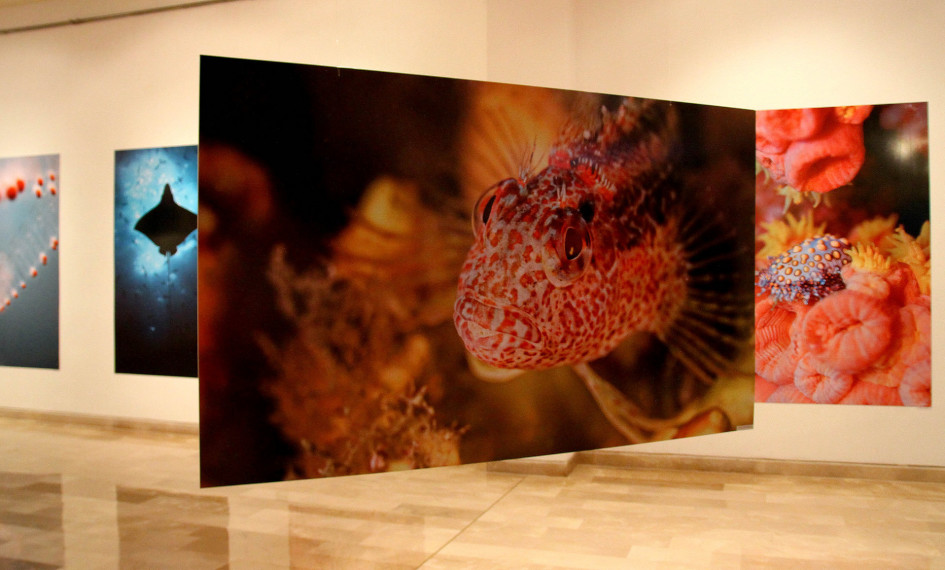Anthropological Museum of Contemporary Art (MACC)
The MACC is an architectural ensemble of 10.00m2 whose design refers to the Manteño-Huancavilca raft.
Its mission is to produce cultural meanings enhanced by the institutional cultural heritage and dimensioning it as symbolic capital. Its main objective is the motivation of the thought and the artistic production, task that approaches from two great fronts, the one of Anthropology and the one of the Contemporary Art. The museum seeks a social projection, for which it is involved with different local communities, it intends to show the public a proposal that will allow a reflection on different readings near the city, using new museographic criteria.
The MACC has seven areas of work: Anthropology, Art, Music, Cinema, Documentation Center, Education and Commercial Products.
Municipal Museum of Guayaquil
It comprises a considerable number of pieces representative of the culture of our city, in what has historical facts and figures relate, telling a continuous story in which the value of our heritage is clearly perceived and the importance of knowing it. It gathers 32 pieces between archaeological replicas and similar copies mounted on wood and metal bases.
Malecón 2000
The Foundation Malecón 2000 was created basically with the purpose of being the entity responsible for designing, executing and managing the great project of Malecon 2000; Which until today, follows modern criteria of self-sufficiency and return on investment. This has been done with the only priority to revalue the center of the city and above all, to significantly improve the quality of life of all Guayaquil.
The Foundation Malecón 2000, is a private law entity, made up of the most representative public and private institutions of the city and chaired by the first personero of the city at that time Mr. Mayor Leon Febles-Cordero.
The Malecon has an extension of about 2 kms along the estuary and has been divided into 3 sectors: South, with its Integration Square, old market and the commercial zone. Centro, with its Civic Square, is located in front of the buildings of Municipio, Gobernacion, includes important monuments of history, such as Torre Morisca, Aurora Gloriosa, Hemicycle of the roundabout and Recreation areas Area North, with its botanical gardens , Bars and cafes, theaters and museums. Then connect your step with the traditional and colonial Las Peñas neighborhood.
Craft Market
The Ecuadorian craftsmanship stands out for its colorful designs and creative forms, which reflect the richness of the country’s 4 natural regions. Landscapes, people, animals, beliefs and myths are shaped by Ecuadorian artisan artists who possess great ability, creativity and ability to work with different materials that lend themselves to create all kinds of articles.
The Handicraft Market is the window of world-wide projection where diverse samples of handicrafts are exhibited in diverse materials such as: wood, walnut, chonta, cotton, oreo straw, silver, dried flowers, steel and copper.
Las Peñas neighborhood
It was declared as Cultural Heritage of the Nation in 1982, being the most representative urban-architectural ensemble of the early twentieth century. It is located in the place where the city was founded and is characterized by cobblestone streets and wooden houses, marked Spanish style. Its natural environment is the Santa Ana Hill ideal for a panoramic view – and the Guayas River.
Santa Ana Hill
It is located to the northeast of the city, at the foot of the Guayas River and next to the traditional Las Peñas neighborhood. Cerro Santa Ana, formerly called Cerrito Verde, is the place where the city originated, since in its skirts its definitive foundation was produced in 1547.
It is currently a tourist attraction in the city. In a route of 310 meters you will find restaurants, bars, coffee galleries, craft shops. It also has green areas for recreation and rest, and its most important attraction: The best view of the majestic Guayaquil.
Plaza Mirador “El Fortín” of Cerro Santa Ana
It is the highest point of the hill, where the lighthouse rises, the Plaza de Honores, the Chapel of Santa Ana, the Open Museum and the barracks that will guard the order of the Plaza.
General Cemetery
The General Cemetery of the City of Guayaquil is an outdoor museum in which we can find perfectly carved sculptures and we can also find reflections of our religious customs.







